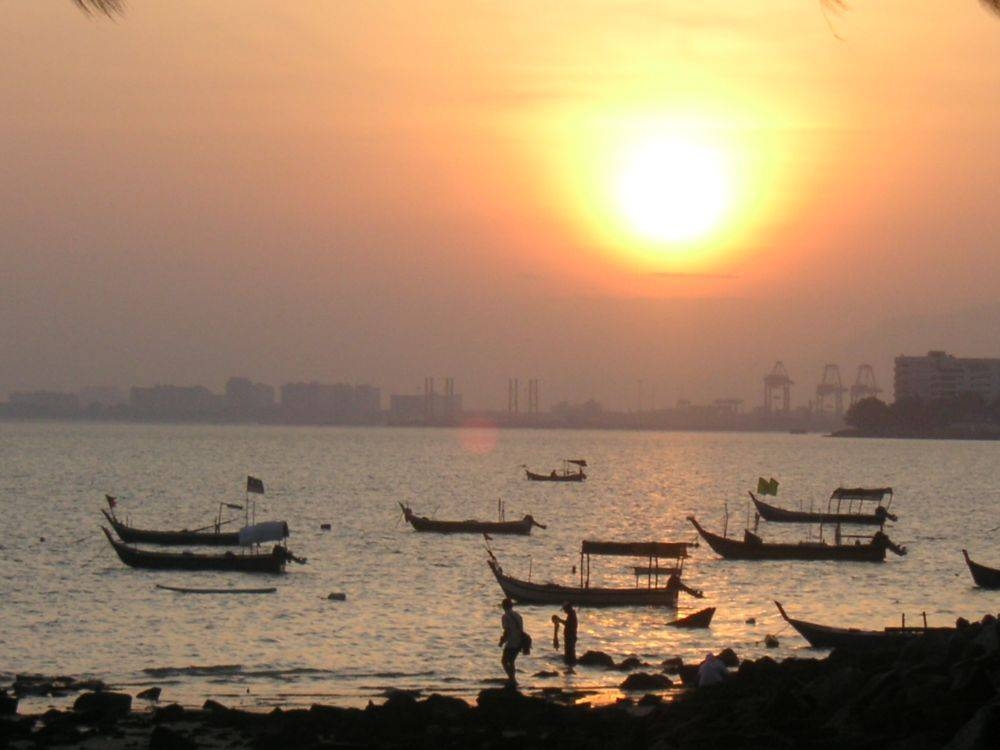MAY 22 — From time immemorial, the Malay fishermen of Penang have been evicted from their homes along the north-east and south-west shores, to make way for prestigious housing projects, with paltry compensations and enormous loss of livelihoods.
From Tanjung Penaga at Fort Cornwallis, to Gurney Drive, Bagan Jermal, Tanjong Tokong, Tanjung Bungah, Batu Ferringhi, Teluk Bahang, Balik Pulau, across to the south-west shores of Teluk Kumbar, their economic livelihoods have been disrupted and along with it, a unique coastal ecosystem which had sustained a pristine aquatic environment for centuries.

The Strait’s Quay fishing village is the last of a composite coastal community which has successfully blended coastal village life with environmental tourism where families offer home stays, BBQ pits and picnic facilities to local residents and out-station visitors, to enjoy their catch — fresh sea fish, prawn and crab to be taken home or cooked at the BBQ pits provided; clean sand for children to pick shells and build sand-castles and for visitors to dip their feet into the waves after a long walk from this shore to the neighbouring Chinese fishing village at Tanjong Tokong.
This community also co-exists peacefully with the Chinese fishing village where the fishermen share a valuable network of information on catchment seasons; boat-maintenance and conditions of the sea — tidal changes, impending storms, sea water toxicity and pollution.
Residents of Tanjong Tokong and Tanjung Bungah are aware that this village was discovered by a community which suffered tremendous losses from the tsunami which hit Penang in 2004 and opened up this enclave themselves without any help from the state government.
They constructed their own homes, using the rocks as foundations for fishing houses and created many pathways for the public to approach the village and enjoy leisurely walks on the beach.
This is a refreshing change, compared to the north-east coastal construction of high-rise condominiums and hotels on beach fronts, blocking public access to the sea.
If this unique fishing enclave becomes yet another centre of sports tourism to cater to students of the Stonyhurst International school, what a shame this would bring to the state, when a self-sustaining local fishing community is yet again evicted for no rhyme and reason, except to pander to the needs of elite children.
Their eviction and the introduction of sports facilities like speed boats and jogging paths is not educational tourism.
Educational life-long learning projects are successful when local fishing communities like this are blended with and integrated into the teaching-learning curriculum of such schools.
Valuable knowledge can be obtained on sustainable coastal life-styles; boat construction; community-constructed half masonry-half wooden blended coastal architecture; seasonable varieties of different species of local sea fish; tidal movements; coastal pollution as so on.
There is also emerging beach art, using shells and organic produce from the sea which we residents of Tanjung Bungah enjoy.
Another private school, Prince of Wales Island International School (POWIIS Primary) has started to do community work by engaging their students in beach cleaning with their teachers and parents.
I had wondered if these teachers knew that Tanjung Bungah residents have for years taken the initiative to do beach-cleaning on our own. Nevertheless, it was reassuring to see the school engaging in a week-end coastal community project.
Further inland, residents here have also started community farming, focusing on organic farming for sustainable livelihoods. Everywhere, environmental tourism is the new catch word, as visitors and tourists search for pristine coastal and inland villages to bring their children to experience local indigenous life-styles.
We appeal to the state government to approach the Board of Stonyhurst International School to “adopt” the fishing village as a life-long learning programme on environmental education — integrate the wealth of knowledge of the local fishing community with its modules for out-reach programmes.
Note that famous scholars like Raymond Firth had produced classic works on “Malay Fishermen: Their Peasant Economy” (1946) which is cited to this day by economists and social scientists.
Note that with global climate change, marine biologists, aquatic and oceanic scientists are among the most sought-after professionals globally.
In Malaysia, the Malay fishing village is their only opportunity to engage in community out-reach research projects, to understand one of the most self-sustaining eco-systems in Peninsular Malaysia.
Singapore destroyed its pristine fishing villages along Tanjung Katong, Geylang Serai coasts and now realise they have lost an important coastal eco-system which could have offered students, researchers and tourists astounding insights into its early economic geography and history.
Penang was once called the “Pearl of the Orient” but for now, development trends are escalating the demise of this jewel. This jewel of an island once tempted European and Asian adventurous, explorers, scholars and gentlemen to want to claim a piece of it and call it “home.”
*This is the personal opinion of the writer and does not necessarily represent the views of Malay Mail.





















